
Station Name: HARPENDEN EAST
|
| Date opened: | 1.9.1860 |
| Location: | Waverney Road (B652) now runs through the station site |
| Company on opening: | Hertford, Luton & Dunstable Railway |
| Date closed to passengers: | 26.4.1965 |
| Date closed completely: | 26.4.1965 |
| Company on closing: | British Railways (London Midland Region) |
| Present state: | Demolished - new housing was built on the site in the early 1970s |
| County: | Hertfordshire |
| OS Grid Ref: | TL144151 |
| Date of visit: | May 1968 & 27.12.2010 |
Notes: The Hertford Luton & Dunstable line was the first railway to reach Harpenden with a station opening on 1st September 1860. Although the line was single track, a passing loop and two platforms were provided at Harpenden. The main station building, which incorporated the two storey stationmaster's house, booking office, waiting room and toilets, was on the up platform, with a very short narrow canopy in front of the booking office. The down platform had a timber waiting shelter. Electric lighting was installed in 1937 replacing the earlier oil lamps. A 30-lever signal box at the south end of the down platform controlled access to the loop and the small goods yard which was sited on the up side of the line to the north of the station. The yard consisted of a loop with one side passing through the goods shed which had an internal crane; it then divided then divided into two sidings serving a cattle dock and pens behind the up platform and the coal yard. There was a wooden hut behind the goods shed. This was originally used as a stable for shunting horses but later became a platelayers’ hut. Despite its small size the yard was always busy, handling coal and coke from Luton gasworks and manure from London Zoo. Large quantities of farm products were dispatched from Randall's nursery, and the yard also handled a large amount of livestock (cattle and horses) and other agricultural produce. The yard closed on 25th November 1963, and the track was quickly lifted and the buildings demolished.
Harpenden East closed with the line on 26th April 1965. Goods traffic continued to pass through until November 1965 when a connection with the Midland line at Luton opened. This made the track east of Luton redundant, and track lifting started at the London Midland and Eastern Region boundary just to the west of Harpenden East station on 8th May 1966 and taken by a demolition train to Luton. The Eastern Region track through the station was were lifted on 26th February 1967. By the early 1970s all the buildings had been removed, and the platforms demolished or buried, as the site of the station and goods yard was redeveloped for housing (Waverney Road). The long distance Lea Valley Path passes through the site and, just to the south, it rejoins the track bed at its original level, and the Station Road bridge is extant. BRIEF HISTORY OF THE LEIGHTON BUZZARD TO WELWYN GARDEN CITY LINE Nothing was done until 1844 when a meeting was held in Luton. By now there was mounting opposition to the scheme which would have to cut across the 'Great Moor', a large area of undeveloped common land close to Luton. This angered George Stephenson who vowed that Luton would not get a direct railway connection to London as long as he lived.
The double-track Dunstable branch opened on the 1st June 1848 with a terminus on the west side of Watling Street and no intermediate stations (although a station at Stanbridgeford was opened in November 1860). By 1851 Luton was the largest town in Bedfordshire without a railway or canal to cater for its increasing industrial growth. In 1853 the GNR was approached to build a branch to their line at Hatfield, but this was turned down. On 3rd July 1854 the Hertford & Welwyn Junction Railway received parliamentary authority to build a line from the North Eastern Railway at Hertford to the GNR at Digswell, and on 30th September 1854 there was a proposal to extend this line across the GNR to Luton and Dunstable linking three established railway companies (NER, GNR & LNWR). Not wanting to be left out, the GNR offered to work the line between Hatfield and Luton although it was not prepared to provide any finance.
The Luton, Dunstable & Welwyn Junction Railway Act was passed on the 16th July 1855 authorising a junction with the LNWR at Dunstable and a triangular junction with the GNR at Digswell together with a bridge over the GNR to allow through running over the H & WJR between Hertford and Dunstable. All three companies were authorised to work the line. A single track was built (with the intention of doubling in the future) with construction starting on 16th October 1855 which, in Luton, was designated as a half-day public holiday as residents had waited so long to get a railway! Unfortunately the company was unable to raise sufficient capital to purchase all the necessary land between Welwyn and Luton. The LNWR refused to help by leasing the line although they did offer to work the line for two years after completion. In an attempt to save the line an amalgamation between the H & WJR and the LD & WJR was proposed. This was bitterly opposed by a minority of disgruntled Luton shareholders who claimed that passengers would be forced to travel to London via the Eastern Counties main line at Hertford rather than using the shorter GNR route via Hatfield. The amalgamation and formation of the Hertford Luton & Dunstable Railway was passed at a heated meeting on 26th January 1858, but although both lines were completed and approach embankments were constructed, the linking bridge was never built due to restrictions imposed by the GNR. The Hertford line was opened to passenger traffic on 1st March 1858 between Hertford (Cowbridge) and a short-lived station at Welwyn Junction on the GNR.Work on the Luton line had been progressing during the amalgamation negotiations, and at a shareholders’ meeting on 6th August 1857 it was announced that the first section of the line between Luton and Dunstable was ready for goods traffic. Several goods wagons were fitted with seats to take shareholders along the line. The line was initially inspected on 18th March 1858 and, after a turntable was provided at Leighton at the request of the Board of Trade inspector, the line was passed a month later, with a goods service running from 5th April 1858 and a passenger service from 3rd May 1858; large crowds travelled to Luton station for a day to take part in the celebrations and ride on the new line. Initially there were five trains in each direction on weekdays only; two of these were later extended to Leighton. At this time Luton trains used a new station in Church Street, Dunstable, with through trains to Leighton bypassing the LNWR station which was at a lower level. Initially an end-on connection had been proposed which would have required raising the level of the road by three feet to provide a level crossing. This was rejected by Parliament, so a diversion was authorised in 1856 taking the new line over Watling Street, rejoining the Leighton line to the west of Dunstable station. A proposed new station at the junction was not built at that time, although through trains from Luton could back into the LNWR station if required.
There was a junction with the GNR at Welwyn, but no station was provided, and the H & WJR station at Welwyn Junction was closed with trains on both lines terminating at Hatfield. In 1864 there were six daily down trains between Hatfield and Leighton, with five up trains. There were a further two down trains between Luton and Leighton in the early morning with two up trains in the afternoon and evening and one train in each direction between Hatfield and Dunstable. On Sundays there were two down trains between Hatfield and Dunstable, with one up train with two short-running services. The Hertford, Luton & Dunstable Railway was absorbed by the GNR under the Great Northern Railway Act of 12th June 1861. This gave the GNR exclusive rights to operate the line, although a clause in the Act gave the LNWR joint rights to use the section between Dunstable and Luton. In December 1868 new parallel lines into Hatfield were brought into use for the branch services, and the earlier junctions were removed in January 1869. Although built as single track throughout, it was always the intention that the line would be doubled, and sufficient land was acquired over some of the route. In the late 1890s the Great Northern line between Digswell and Hatfield was widened with a new track being provided for Dunstable trains, and the old Dunstable line becoming the new down slow main line In 1890 passenger numbers were sufficiently high for doubling the line between Luton and Dunstable. This was authorised by Parliament in 1891, but progress was slow and it did not open until 10th September 1899. Proposals to double the remainder of the line brought a lukewarm response from the GNR. Passenger numbers increased through the 1890s, and by 1900 there were nine trains in each direction between Luton and Dunstable, with eight in each direction between Luton and Dunstable and seven between Dunstable and Leighton.In 1920 the new town of Welwyn Garden City was founded by Sir Ebenezer Howard, following his previous experiment in Letchworth Garden City. Howard had called for the creation of planned towns that were to combine the benefits of the city and the countryside and to avoid the disadvantages of both. During the construction of the new town, temporary contractors’ halts were provided at the junction of both the Hertford and Luton lines, close to the site of the earlier Welwyn Junction station. The halt on the Luton line became a public station on 14th August 1920, remaining in use until 20th September 1926 when the new Welwyn Garden City station was opened. Through the 20th century the line remained very profitable, due in part to the large number of private sidings, in particular those serving chalk quarries near Dunstable, the sand and gravel pits around Leighton Buzzard and, later, Vauxhall Motors in Luton. Following the 1923 general grouping the Dunstable branch became part of the London Midland & Scottish Railway while the Hatfield to Dunstable line was part of the London & North Eastern Railway. This split continued after nationalisation in 1948 with British Railways Eastern Region being responsible for the Hatfield line as far as Harpenden down distant signal, with the remainder of the line coming under the London Midland Region. On 2nd April 1950 the boundary was adjusted, transferring Harpenden (East added on 25th September 1950) to the LMR. Diesel-hauled freight trains started replacing steam in February 1959, and passenger trains in June 1959, the latter being replaced with DMUs in 1962.
The line remained open for freight traffic until 1st January 1966 after which it was cut back to Grovebury sidings south of Leighton Buzzard, serving sand and gravel pits, until final closure on 5th December 1969. Track-lifting was piecemeal, starting at Dunstable in late 1968 but not reaching Stanbridgeford until July 1969. Track-lifting west of Stanbridgeford started in February 1970 and was not completed until February 1971. National Cycle Route 6 now follows what is now known as the Sewell greenway between Stanbridgeford and Dunstable.
The Hatfield line was scheduled to close on 6th January 1965 as part of the Beeching cuts. Closure was deferred following local objections - but only until 24th April when the last 'Skimpot Flyer' carried a wreath and a large number of passengers on a farewell journey along the line: it returned to Hatfield almost empty! The line remained open for freight and for goods traffic to Luton Bute Street until 26th June 1967. After that date the line between Luton and Dunstable was singled and retained to serve the Dunstable Cement works at Houghton Regis, with a new connection from the Midland main line at Luton opening in November 1965. The east end of the line was also retained for rubbish trains bound for Blackbridge sidings east of Wheathampstead. Track lifting on the remaining section between Blackbridge and Luton started at the Eastern Region/London Midland region boundary west of Harpenden East station on 8 May 1966 towards Luton and from 26th February 1967 towards Blackbridge. Blackbridge sidings closed in May 1971, and much of the track between Welwyn Garden City and Wheathampstead now forms the Ayot Greenway cycleway and footpath, with the the trackbed between Luton Hoo and Harpenden is incorporated into the 50-mile Lee Valley Walk. A number of enthusiasts’ specials visited the remaining line between Luton and Dunstable. In October 1968 a special train ran from St Pancras to Bedford, returning to Luton, where it was the first passenger train to use the connection between the Midland and Bute Street station. It continued to Dunstable North as part of the Midland Railway London Extension centenary celebrations. The last passenger excursion was on 17th January 1987 when Hertfordshire Railtours’ 'Chiltern Chariot' visited the line running to the Dunstable cement works via the Vauxhall sidings. The line was finally closed to all traffic when trains to the oil depot, on the site of the Great Northern goods yard at Dunstable North, were withdrawn in 1989, by which time the line had just one train per week. Apart from the section through the site of Bute Street station, the track was then mothballed.
In December 2003 the Department for Transport approved the Transport & Works Act submission for a £85m scheme to convert the line into a guided busway. Planning permission and a Transport & Works Order were granted in November 2006, and the Transport Minister gave the go-ahead in August 2008. Tenders for its construction were sought in July 2009. Sources: Wikipedia (Leighton Buzzard station) and the Hatfield, Luton & Dunstable Railway by G & S Woodward (1977). Published by Oakwood Press ISBN 978-0-853614-58-6. For further reading see Hertfordshire's lost railways by Keith Scholey ISBN ISBN 1 84033231 X and Bedfordshire's lost railways by Keith Scholey ISBN ISBN 184033 271 9 and Branch Line to Dunstable by Sue & Geoff Woodward (2008) Published by Middleton Press ISBN 978-1-906008-27-7. Other web sites: Lost lines - features photos taken along the line between 1989 - 2007. BBC Beds, Herts & Bucks web site. Disused Railways web site. Click here to see an aerial view of the whole Leighton Buzzard - Dunstable line on Google Earth. All the stations are shown. Prepared by Mark Percival. Tickets from Michael Stewart except 5347 Brian Halford, route map drawn by Alan Young, Bradshaw from Chris Hind To see other stations on the Leighton Buzzard - Welwyn Garden City line click on the station name: Leighton Buzzard, Stanbridgeford, Dunstable North, Dunstable Town, Chaul End, Luton Bute Street, Luton Hoo, Wheathampstead, Ayot, Welwyn Garden City Halt (first station) & Welwyn Garden City (second station) |
||||||||||||
east_old2.jpg)
Copyright photo from John Alsop collection


east_old5.jpg)
Copyright photo by R M Casserley
east_old4.jpg)
Photo from John Mann collection
east_old11.jpg)
Photo by Nigel Lester
east_old9.jpg)
Photo by David Pearson
east_old1.jpg)
Photo by David Rice
east_old8.jpg)
Photo by Ian Baker
east_old7.jpg)
Photo by Ian Baker
east4.jpg)
Photo by Nick Catford
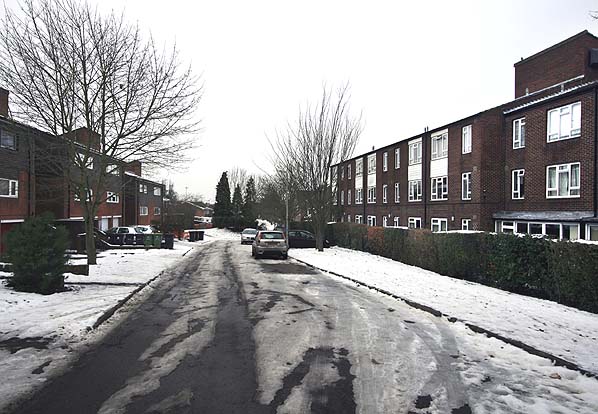
Photo by Nick Catford
| Last updated: Sunday, 21-May-2017 11:02:24 CEST |
© 1998-2011 Disused Stations
|
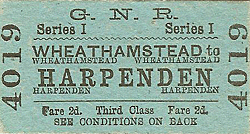
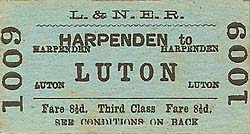




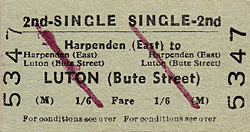
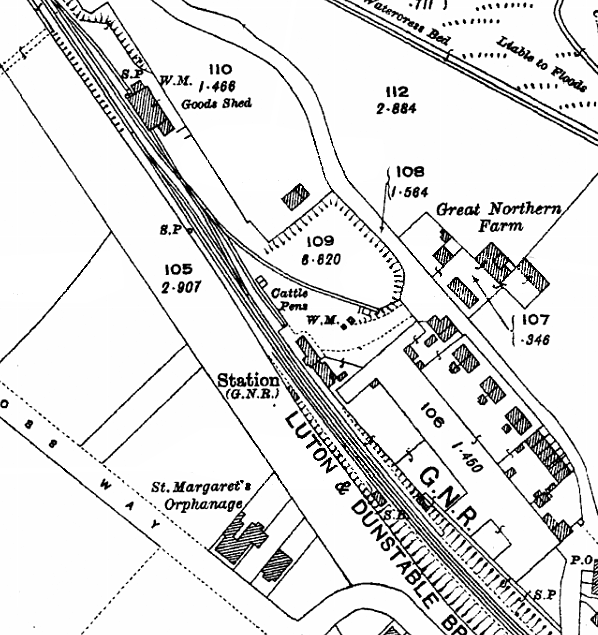
east_old_thumb6.jpg)
east_old_thumb3.jpg)
east_old_thumb12.jpg)
east_old_thumb13.jpg)



east5.jpg)


 Home Page
Home Page